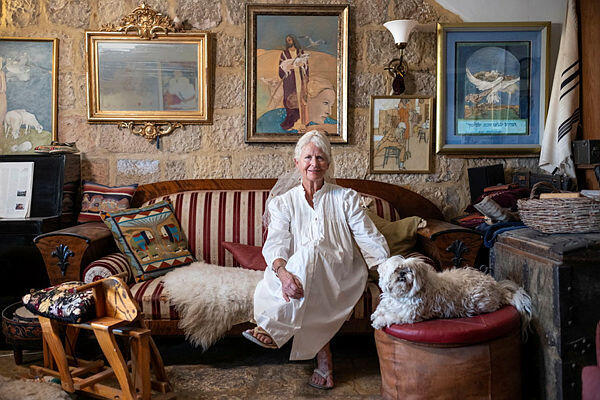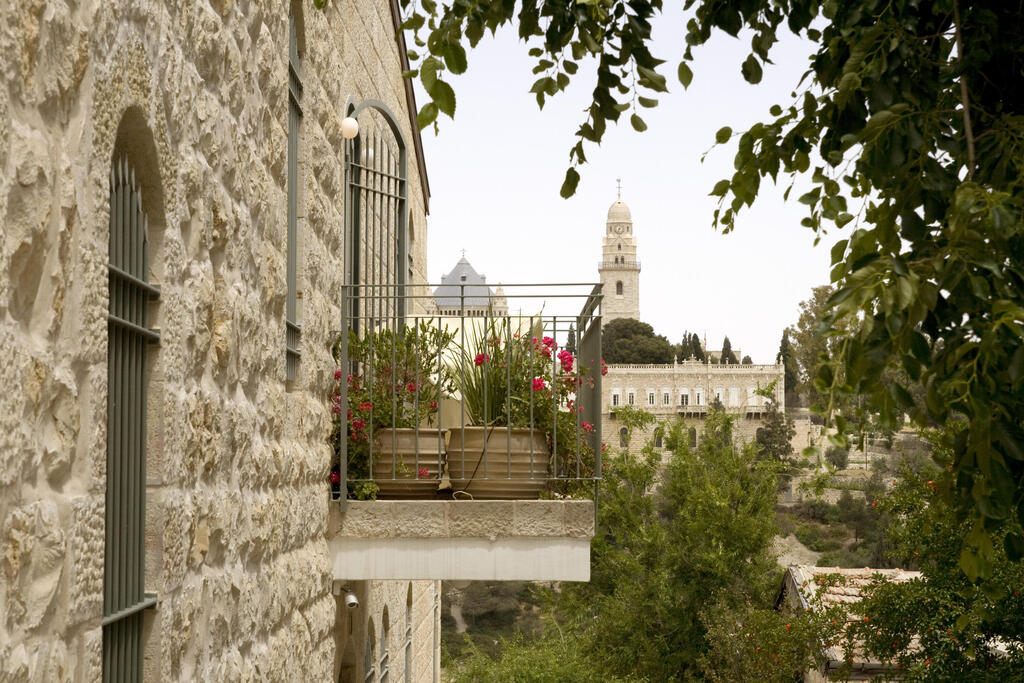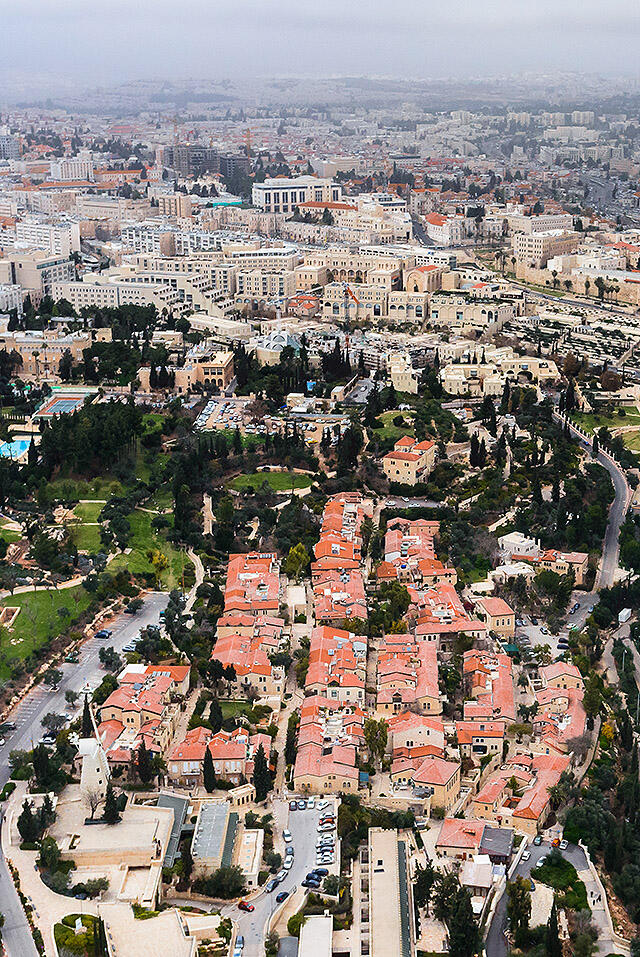Birgitta Yavari-Ilan shares the story of how she came to live in a stone house in Jerusalem, in a quaint, cobblestone neighborhood called Yemin Moshe.
The house:
This isn't just any house. Built in 1860, it's a historic stone structure with multiple levels and rooms that offer breathtaking views of the Old City walls. Birgitta purchased it in 1977 for $50,000 from the Jerusalem Development Authority. Today, its value is immeasurable.
"I moved here in 1977. The house was quite run-down and needed extensive renovations," Birgitta shares. "Before that, I lived in the East Jerusalem neighborhood of al-Eizariya and worked at an orphanage. Now, I live here alone and rent out rooms to students who are temporarily in Jerusalem and looking for an affordable and welcoming place to stay. They contribute what they can."
Yemin Moshe:
"This neighborhood is filled with beauty," Birgitta says. "I poured my heart into creating this home, and I love that people wander through the area and appreciate its charm. I feel incredibly fortunate to have this house and to have shaped it according to my desires. I believe this beauty should be shared," she says.
"The architect who renovated the house told me, 'You reside at the best spot in Yemin Moshe, with the most stunning view.' Sadly, many houses here stand empty, owned by wealthy and pretentious individuals from abroad who display signs prohibiting photography. We don't own the neighborhood, its history or the view. We are merely caretakers of our homes, and I can't comprehend such an attitude."
Journey to Israel:
"I was born in Vetlanda, Sweden, a small town located just 30 kilometers from the fictional Pippi Longstocking's hometown," Birgitta explains. "My mother came from a Jewish family, but religion wasn't a part of our upbringing. My father, a businessman, held great admiration for Jewish people. Even as a child, I often thought about God and dreamed of going to America," she shares.
"I left Sweden in 1963 at the age of 18 and arrived in the United States. My focus was solely on finding God, pursuing art and finding a husband. I enrolled in an art school in New York City. It was the sixties, a time of free love and artistic expression. During my time in New York, I met a Persian man from a very affluent family who fell deeply in love with me and proposed. I didn't want to return to Sweden, so I married him. He was determined to marry me, claiming he would never marry otherwise. It was incredibly romantic, but it was a compromise on my part. I didn't truly love him.
"After we separated, I visited Israel for the first time after the Six-Day War. I returned to Sweden for a while, but in 1973, just before the Yom Kippur War, a friend suggested that if I was searching for God, Israel was the place to be. I decided to listen, and my heart led me to Jerusalem."
Life in Jerusalem:
"I was a free spirit," Birgitta recalls. "I arrived by ferry with my young daughter and my little blue Volkswagen. We drove straight to al-Eizariya, where a Swedish family rented me an apartment. I established an orphanage there, and everyone mistook me for a nun.
"After a few years of familiarizing myself with Jerusalem, I noticed a concentration of artists in the Yemin Moshe neighborhood. A friend asked why I lived in East Jerusalem instead of seeking a place among fellow artists in Yemin Moshe. Around that time, my daughter fell seriously ill with typhus, and Hadassah Hospital saved her life. That's when I decided to move.
"With the help of Jewish friends who vouched for me, I obtained permanent residency and was granted permission to purchase this house, which was incredibly affordable at the time. I took the orphans with me, and they stayed for another two years until I met my Israeli husband, who was 15 years my junior."
Family life:
"I married four times but never pursued a married man," Birgitta reveals. "I was 34 when I met my Israeli husband. He was a young man yearning for a life filled with freedom and love, and he fell head over heels for me. I had three children with him, one of whom passed away at the age of twelve and a half. My daughter now lives in Sweden and isn't particularly drawn to Israel. My son, Yishai, resides in Savyon with his wife, and I have three grandchildren through him. Unfortunately, my Israeli husband was involved with multiple women, and after 15 years, he became a freelance tour guide and left. I was devastated. Perhaps I shouldn't have, but after my Israeli husband, I married Elliott, a wonderful man from South Africa. He passed away two years ago, leaving me alone."
Making a living:
"I am a painter and have authored books that combine my artwork with my thoughts," Birgitta shares. "In the past, I also worked for European magazines. As an artist, I don't require much to live comfortably. I am thrifty and generate income by renting out rooms in my house. I have a multi-millionaire sister, but I choose not to accept financial assistance from her."
The sister:
"Are you familiar with the Swedish fashion brand Nudie Jeans?" Birgitta asks. "It's an internationally recognized company founded and designed by my younger sister, Maria Eriksson. She, too, has been married three times; we share many similarities. She owns houses in Sweden and Norway and possesses considerable wealth. I am genuinely happy for her."
Legacy:
"My wish is for this house to never be sold," Birgitta states. "I envision it becoming a museum and guesthouse after my passing, preserving its current state. All the furniture, my original paintings and my books would remain. People should have the opportunity to visit, spend the night and experience its unique atmosphere."




